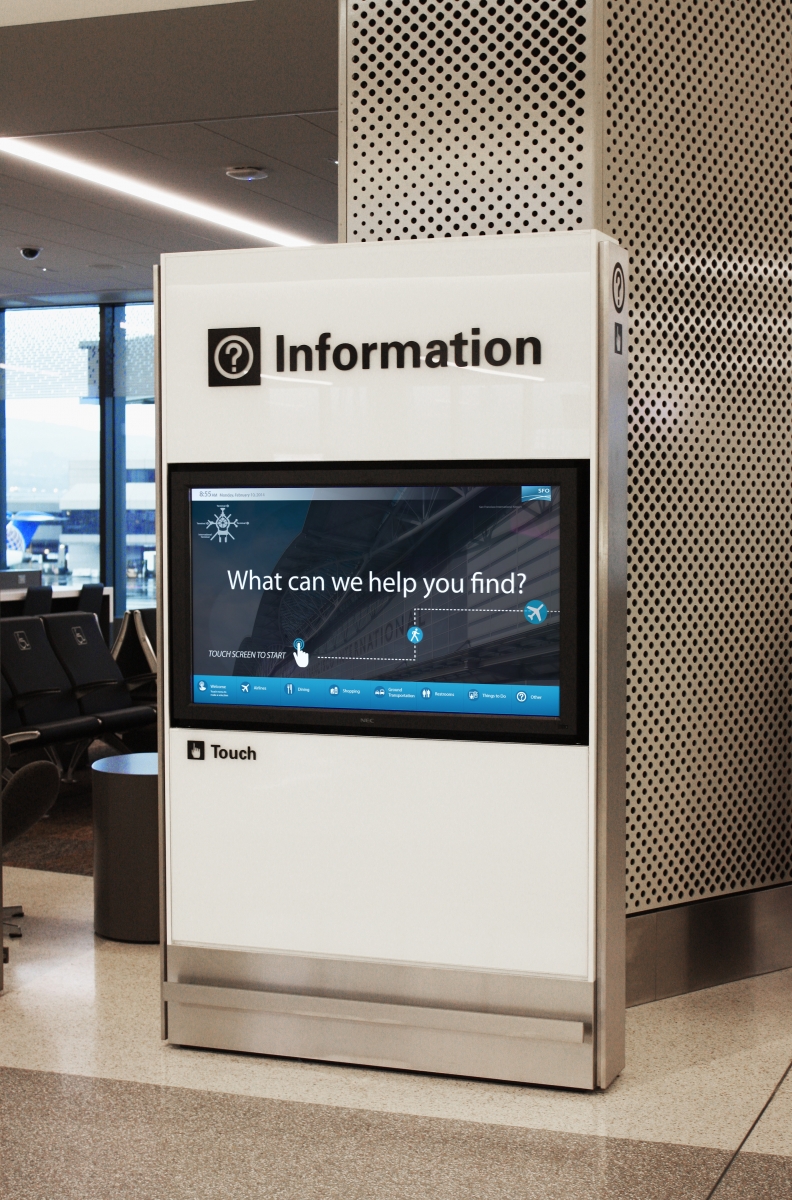Improving visitor experience with interactive wayfinding
In many venues and organizations helping people safely navigate the facility is very important to the business. Airports, train stations and bus terminals, with their complicated layouts, are often filled with large numbers of people who need help getting to their destination. In the past facility navigation was handled by static signs, paper posters, and people hired to give directions. This approach was costly in environments where information is constantly changing and updating. Today interactive wayfinding is enabling organizations to cost effectively get visitors from point A to B.
Venues such as airports, hotels, hospitals and universities are utilizing interactive wayfinding to direct visitors. Interactive wayfinding kiosks provide users with the ability to help th emselves and create savings in a number of areas. These kiosks also provide organizations with an opportunity to include information on popular destinations, restaurants, shops and hotels. As well as, timely information on local events and possibly the opportunity to buy attraction tickets. For example, a hungry traveler could use digital wayfinding system to locate both his gate and what food offerings are in that area. Digital screens can share real-time information such as changes to departure and arrival times, news, and weather.
emselves and create savings in a number of areas. These kiosks also provide organizations with an opportunity to include information on popular destinations, restaurants, shops and hotels. As well as, timely information on local events and possibly the opportunity to buy attraction tickets. For example, a hungry traveler could use digital wayfinding system to locate both his gate and what food offerings are in that area. Digital screens can share real-time information such as changes to departure and arrival times, news, and weather.
In a hotel, digital signage can act as a virtual concierge. It can offer information such as a hotel map and meeting schedules. Strategically placed touchscreens can allow users independently search for information, such as room availability, dining menus, weather and details about tourist attractions. This frees staff from answering commonly asked questions and enables them to focus on providing better customer service.
In a shopping mall, digital signage is easily updated when one store leaves and another takes its place. Touchscreen kiosks can help answer shoppers' questions. The video capability of digital signage allows operators to place advertising on the screens, offering additional revenue opportunities for retailers and facilities managers.
For universities, digital wayfinding screens can serve double duty as an emergency messaging system. Universities often have a large population over a vast area. In the event of an emergency such as a severe thunderstorms or tornado alerts, getting current information out as quickly as possible is imperative and could save lives.
When using a solution like Omnivex Moxie for interactive wayfinding you have the ability to handle key requirements such as:
Conditional formatting - Some elevators may not operate at certain times of the day or escalators may change direction depending on the traffic direction. Certain routes that are fine during the day may not be advisable at night when there are fewer people around and dark paths. The system should be able to decide the appropriate route based on current conditions.
Customizing for the viewer - For the physically impaired, wayfinding can be a challenge since certain routes may not be accessible. An interactive wayfinding solution can determine the best route for an individual with accessibility issues. Additionally, with digital signage the height of touchpoints on a screen can dynamically adjust to suit the reach of the viewer.
Auxiliary information - There often is information related to a wayfinding inquiry that will assist the viewer. It could be a store description, details such as hours of operation or advertising about current promotions taking place there. Turn-by-turn directions may be provided by printing a map, or texting directions to a mobile device.
Updates - Information changes quickly and a big advantage of digital signage is the speed at which updates can be made and distributed. Printed wayfinding signs are time consuming and costly to update.
Emergency procedures - Emergency evacuation procedures can be built into an interactive wayfinding solution. The system should automatically direct people to the nearest, safest exit and away from trouble.
